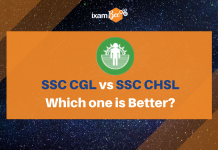What is ARTICLE 15?
India is a democratic country and its constitution written to protect its citizens and empower them, is the longest written constitution containing 448 articles in 25 parts,12 schedules and 101 amendments. It contains some fundamental rights and duties so that all citizens are treated on an equal footing and enjoy basic or civil liberties by living in the country.
Fundamental rights that come under part 3rd of the Constitution has created a buzz in the town because of the article 15 contained in it on which Ayushman Khurana’s latest movie is based.The movie shows the vulnerable and deteriorating condition of scheduled castes and scheduled tribes despite years of reservation. To have a deeper look into the matter, it is essential to know what Article 15 is all about , what is its need and demand and the way forward.
Article 15 i.e , Article 15(1) and 15 (2) states that the state shall not discriminate against any citizens on the ground of race, religion, sex, caste, creed, color and place of birth. Further, such discrimination should not exist about use or access to shops, public restaurants, hotels and places of public entertainment. It further extends – to make it possible for the state to create special provisions for protecting women’s and children’s interest under Article 15(3). Article 15(4) empowers the state to create special arrangements for promoting the interests and welfare of educationally and socially backward sections of the society. Article 15(5) further capacitates the country to reserve some seats in educational institutions both private and those aided or not aided by the government. Even in government services, a certain quota is for reserved categories.
The reason behind giving these power and provisions to the state is to create a society where all are treated equally and an amicable environment exists for such section upliftment so that they do not suffer the same atrocities as their ancestors have gone through during pre- independence India when caste system was prevalent and these SC,ST, Women and other backward classes were seen and deemed inferior to other section. But even after independence, their condition has not changed, though improved a little bit as compared to earlier situation.
Although various acts like SC And ST Act 1989 (Prevention of Atrocities) , Caste Disabilities Removal Act 1850 , Sexual Harassment of Women at Workplace Act 2013, etc. and punishment like imprisonment with fine, non cognizable bail exist but still cases of rape of Dalit girls and women, mob lynching, death of sewer cleaner find place in newspaper front- page headlines. The fault is not in the law but in its poor implementation. Lack of education, awareness of their rights and opportunities further exacerbate the situation. Besides this hatred among the upper class regarding reservation and transition of discriminative ideas from one generation to another are other loopholes.
Finally, the existence of all in one sphere will need the idea of one nation, one religion – Indian.
Also Read:
Consitution of India: A Brief Summary
Get Free Online Test Series, GK updates in form of Beepedia, as well as latest updates for Bank PO, Bank Clerk, SSC, RBI, NABARD, and Other Government Jobs.
займ на карту без отказов мгновенно до 5 000 т.р срочносрочный займзайм на киви без проверок












